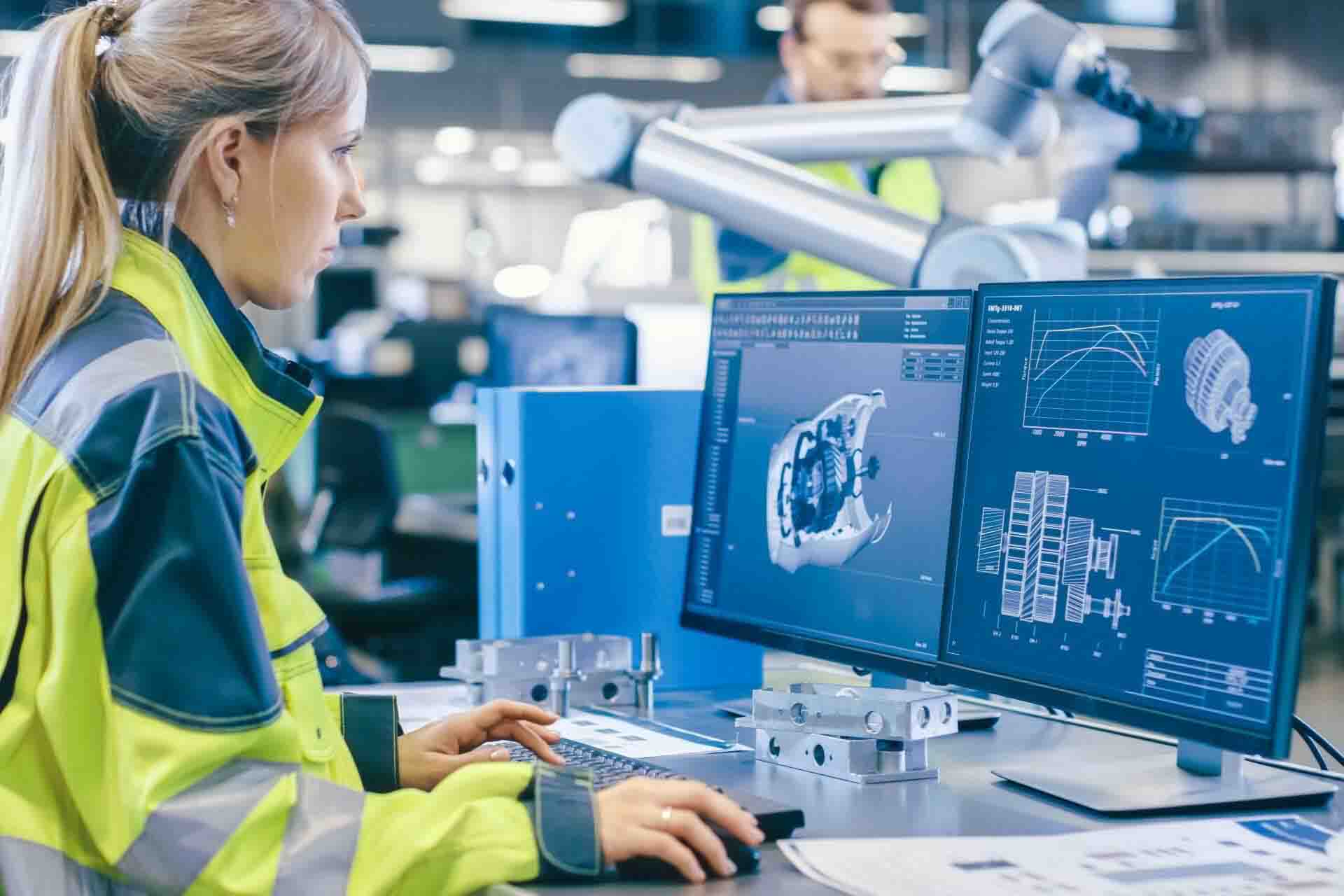
In the world of manufacturing, the efficient operation of motion control technology depends on a successful human-machine interface, or HMI. Even the most cutting-edge machinery requires users to be able to effectively communicate with the equipment to achieve the desired results. This means that selecting an optimized HMI system for your business’s specific purpose is an absolute necessity.
Some of the most crucial elements in choosing an HMI system for your machinery are obvious ones: They should be simple to operate, easy to train new employees on, and adaptable across multiple systems. However, there are a few other key features to look out for that go beyond these basic considerations.
In the following blog post, we’ll discuss the most important elements to look for in HMI systems, helping you to optimize both system performance and operator efficiency.
HMI Systems: The Basics
Human-machine interface systems can refer to any method by which an operator controls a machine. However, in modern technology, it is most frequently used to refer to a digital interface that allows users to operate a motion-control system, usually through the use of a touch screen. This method replaces the old standard of large control panels full of buttons and dials. Instead, modern HMI systems allow manufacturing tasks to take place much more quickly and effectively than traditional control panels.
Intuitive Design
It’s impossible to overstate the importance of an intuitive design, as this feature is what will allow operators to begin working with a new system as quickly and efficiently as possible. When shopping for an HMI system for your machinery, look for one that doesn’t try to reinvent the wheel: The interface should have a familiar setup, with a menu on the left and a power button on the lower right. Basic controls should be labeled clearly, and any icons should be easily recognizable (such as the universal exclamation point in a triangle to indicate a warning, for example).
Another crucial feature of an intuitive HMI system is an element of simplicity. That is, interfaces should not overwhelm their operators with extraneous information. Instead, readouts should be streamlined and uncomplicated. Anything that is critical to the current task—including emergency warnings—should appear in an easy-to-read format in the center of the screen. Buttons, menus, and other crucial features must also be clearly labeled for ease of use.
Robust Connectivity
In the past, traditional manufacturing equipment has been independent and isolated from the other elements of the operation. This requires a coordinated effort from human workers to create a cohesive production. With modern systems, this process has been greatly simplified by an increased connectivity between disparate elements of an operation. Provided, of course, you select the correct HMI system.
Ensuring robust connectivity between HMI systems means choosing one that can be easily integrated between multiple operating systems. Various software should be compatible with your system, as different machinery will have different software requirements. Systems should also be easily upgradable to ensure they are able to communicate effectively. This will allow motion-control systems to coordinate with one another and even be operated remotely using tablets and other devices.
Fostering a higher level of connectivity will ensure a smoother operation than has been previously possible, but it requires choosing an HMI system that is up to the task.
Real-Time Data Visualization
For users to interface with the machinery they operate effectively, they also need to have access to detailed and up-to-date data. This is why real-time data visualization is one of the key features of a good HMI system. Of course, the information used in most manufacturing processes is extremely complex, which is why the system must also be able to interpret the data and display it in a way that operators can easily comprehend.
The importance of effective data visualization extends to both the current operation and the maintenance requirements of the machinery. With an effective HMI interface, operators will be able to make fast decisions with regard to the production they are undertaking. They will also be able to identify any problems that may occur with the machinery, ensuring that they can be addressed quickly. Both of these factors will increase the efficiency of your operations and save a great deal of unnecessary costs.
Customization Options
Every manufacturing setup is different, so it’s critical that a strong HMI system is adaptable to the needs of the business. For this reason, good human-machine interfaces must be highly customizable. Users should be able to make whatever changes they need to perform their required tasks as easily and efficiently as possible.
Some of the available customization options are in the layout of the interface itself. Menus and controls should be programmable to the needs of the system and operators. Users should be able to add and remove buttons, gauges, and charts as necessary. Users can also add other unique customizations that are suited to the needs of their particular business, whether that’s a special color scheme or a training mode for new employees.
Customizable HMI systems allow for a greater level of correspondence between various machines in an operation. This, in turn, allows for a much greater cohesion between the workers across multiple locations in a business.
For Further Information
To ensure you have the perfect HMI system for all the requirements of your manufacturing operation, consider having a customized product created for your business by Aberdeen Dynamics. We specialize in designing motion-control systems and their requisite components. This includes the servos and actuators that most manufacturing technologies require, plus HMI systems and the connected software as well. Contact us today to discuss the specific requirements of your operation, and let us help you create a more streamlined production process.